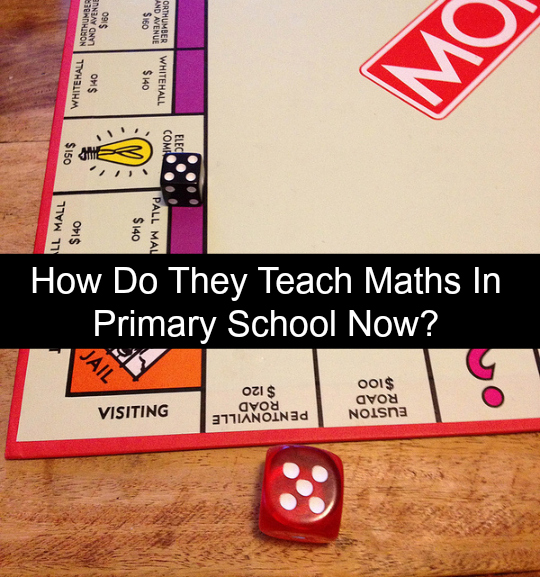Proven Techniques to Streamline Complicated Mathematics Topics for Better Comprehension
Intricate math subjects usually existing substantial challenges for learners. Numerous tested approaches can facilitate understanding. These techniques include using aesthetic aids, breaking down problems, and attaching ideas to real-world scenarios. Each technique offers to improve understanding and retention. The efficiency of these methods increases vital inquiries concerning their implementation in educational settings and their influence on pupil interaction. What details methods could be most helpful in practice?
Comprehend the Foundations
Comprehending the structures of mathematical principles is essential for promoting deeper understanding. A solid understanding of fundamental principles permits students to build upon their expertise, developing a much more meaningful understanding of advanced topics. This fundamental expertise consists of vital math procedures, number concept, and the buildings of various mathematical functions. By ensuring that pupils are comfy with these building blocks, educators aid to avoid complication and irritation as they run into extra complicated concepts.
Additionally, a concentrate on fundamental understanding urges critical reasoning and analytic abilities. When students identify the connections between various principles, they can approach challenging issues with confidence. This tactical focus not just improves retention but also promotes a way of thinking tailored towards expedition and inquiry. Inevitably, focusing on foundational understanding outfits students with the devices essential to navigate the intricacies of mathematics, paving the method for success in both academic and real-world applications.

Usage Visual Aids and Diagrams
Aesthetic help and layouts work as powerful devices in streamlining complicated mathematical subjects. They facilitate comprehending by giving graphes of abstract concepts, making them a lot more substantial. For example, charts can illustrate functions' habits, while geometric representations can make clear spatial relationships in problems including angles and forms.
Flowcharts and concept maps can damage down complex procedures, assisting students through multi-step services visually. This approach not only enhances comprehension but additionally involves various discovering styles, particularly aesthetic learners that might battle with verbal descriptions alone.

Damage Down Issues Into Smaller Sized Actions
Damaging down problems into smaller sized, convenient steps can significantly improve understanding in maths. This approach enables students to concentrate on one component of a trouble at a time, minimizing sensations of bewilder and complication. By isolating each step, trainees can establish a clearer understanding of the underlying principles and methods needed to reach a remedy.
When addressing an algebraic equation, one can begin by streamlining each term before applying operations. This methodical break down not just clears up the procedure yet likewise makes it possible for trainees to recognize errors much more conveniently.
Moreover, this method encourages essential thinking, as learners are triggered to examine each step's relevance to the overall issue. Ultimately, breaking down troubles cultivates a more methodical strategy to maths, advertising a much deeper understanding and retention of product. By mastering smaller actions, pupils construct self-confidence and skill that add to their success in much more complicated mathematical obstacles.
Incorporate Real-World Examples
Incorporating real-world examples right into mathematics instruction can greatly boost pupil engagement and understanding. They typically locate the product extra relatable and easier to realize when trainees connect mathematical principles to day-to-day life. Making use of budgeting scenarios to show enhancement and reduction helps pupils understand the useful applications of these procedures. Similarly, utilizing sports statistics can successfully show concepts in possibility and standards, making the finding out experience more pertinent and delightful.
Educators can likewise integrate real-life data, such as populace growth or ecological statistics, to show functions and charts. This strategy not just clarifies abstract ideas however also fosters crucial assuming as students analyze and translate actual information (struggles in primary math). By connecting the void in between theory and method, pupils are most likely to value the worth of mathematics in their daily lives, bring about boosted retention and application of mathematical principles
Urge Collaborative Learning
Collective learning acts as an effective device in simplifying complicated mathematics concepts. By involving in team problem fixing, trainees can share varied perspectives and methods, improving their understanding. Furthermore, peer mentor techniques and interactive research sessions promote a supportive setting, allowing learners to grasp challenging material better.
Team Trouble Addressing
Team trouble fixing promotes a setting where students can actively involve with complex math ideas through synergy. By functioning together, students can share diverse perspectives and techniques, improving their understanding of mathematical concepts. Collaborative initiatives urge discussion, allowing people to verbalize their reasoning and clarify false impressions. This communication promotes essential reasoning and deeper understanding of difficult topics. In addition, group problem solving can reduce anxiousness related to difficult math problems, as trainees support each various other in conquering challenges. Educators can promote these sessions by appointing diverse duties within groups, guaranteeing each pupil contributes and learns from the process. Inevitably, this collaborative technique not only enhances understanding however also develops essential interaction and teamwork abilities essential for future scholastic and professional ventures.
Peer Training Techniques
Structure on the advantages of group problem solving, peer teaching strategies become an effective method to further boost collaborative learning. These methods include trainees describing concepts to one an additional, which reinforces their understanding and builds self-confidence. When learners handle the duty of educator, they express their assumed procedures and clarify their very own misunderstandings. This reciprocal exchange cultivates a supportive environment where pupils feel much more comfy seeking and asking inquiries help. Furthermore, peer mentor encourages involvement, as students frequently connect better to their peers than to typical direction. By integrating these techniques right into the learning process, educators can develop a vibrant class ambience that advertises much deeper comprehension and retention of complex mathematical subjects.
Interactive Research Study Sessions
Interactive research sessions can considerably boost the learning experience by promoting an environment where students proactively involve with each other. These collaborative settings urge participants to share varied perspectives, consequently deepening their understanding of intricate math subjects. Students can break down elaborate concepts right into convenient parts, facilitating more clear understanding. Through team conversations, trainees can make clear uncertainties and enhance their expertise by showing peers, which solidifies their understanding of the use this link product. Furthermore, interactive sessions promote motivation and accountability, as pupils really feel much more devoted to their studies when working along with others. Incorporating tools such as problem-solving video games or collective systems can better improve these sessions, making finding out both delightful and effective. On the whole, interactive research sessions act as a powerful technique for boosting mathematical understanding.
Utilize Modern Technology and Online Resources
As pupils browse through complicated mathematics subjects, leveraging modern technology and on-line resources can significantly improve their understanding. Educational systems such as Khan Academy and Coursera provide learn this here now video clip tutorials that break down intricate principles right into absorbable segments. These resources typically integrate interactive elements, allowing pupils to practice problems in real time, get instant responses, and track their progress.
Furthermore, math-specific apps like Photomath and Desmos give tools to imagine equations and graphs, promoting a much deeper conceptual grasp. Online forums, such as Heap Exchange, make it possible for pupils to pose questions and involve with a community of learners and specialists, better clearing up challenging topics.
Practice On A Regular Basis and Evaluation Constantly
Constant method and regular testimonial are essential for understanding complex mathematics subjects. Engaging with mathematical concepts daily strengthens understanding and aids to recognize areas that call for more attention. By addressing issues repetitively, learners can strengthen their grasp of theorems and procedures, making them acquired behavior in time.
Integrating an organized evaluation schedule enables people to take another look at formerly learned product, guaranteeing retention and clarity - struggles in primary math. This method not just help in memory debt consolidation however also highlights links in between various mathematical concepts, promoting a much more holistic understanding
Additionally, setting details objectives for both method and testimonial can enhance emphasis and inspiration. Alloting time each week for targeted workouts and assessments can produce significant benefits. Ultimately, regular method and constant testimonial form the foundation of successful mathematics education, equipping learners with the self-confidence and skills required to tackle significantly complicated subjects.
Often Asked Questions
How Can I Remain Motivated While Understanding Complicated Math Topics?
Staying encouraged while learning intricate mathematics topics involves setting possible objectives, celebrating little successes, seeking support from peers, utilizing varied resources, and keeping a positive way of thinking to welcome challenges as chances for development and understanding.
What Prevail Blunders to Stay Clear Of in Mathematics Understanding?
Typical errors in math understanding consist of overlooking fundamental concepts, rushing via click to find out more problems, failing to exercise frequently, and misunderstanding terminology (struggles in primary math). Furthermore, over-reliance on memorization instead of comprehending underlying principles can hinder true understanding and application
Just how Do I Examine My Recognizing of Mathematics Concepts?
To examine understanding of math principles, one must frequently practice troubles, look for responses, take part in discussions, and make use of self-quizzes. Assessing errors and training ideas to others can further boost comprehension and retention of material.
What Should I Do if I Feel Overloaded by Math?
When feeling bewildered by math, one need to take breaks, practice mindfulness, and break issues right into smaller components. Seeking assistance from instructors or peers can additionally supply clearness and reduce stress and anxiety connected with difficult concepts.
How Can I Discover a Math Tutor or Research Group?
To discover a math tutor or research group, one can browse on the internet systems, regional neighborhood boards, or academic institutions. Connecting with peers and looking for suggestions can also bring about effective coaching alternatives and research study cooperations.
When students recognize the connections between various ideas, they can approach challenging issues with self-confidence. Team problem solving promotes a setting where pupils can actively involve with complex mathematics principles via team effort. In addition, group issue resolving can minimize anxiousness connected with tough math problems, as students sustain each various other in conquering challenges. These techniques entail students explaining principles to one another, which reinforces their understanding and constructs confidence. Students can break down intricate principles into manageable parts, facilitating more clear understanding.